Last Updated on February 19, 2024
We haven’t seen a British costume drama about class relations as handsomely appointed or as engaging as “Belgravia” since “Downton Abbey.” But Julian Fellowes only sees a similarity between his two creations because they are both British period dramas that are “quite a lot about love.”
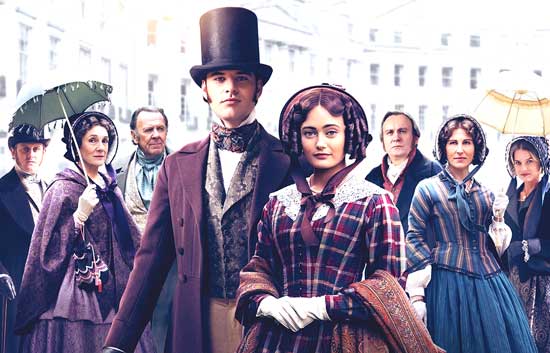
To help keep this site running: Willow and Thatch may receive a commission when you click on any of the links on our site and make a purchase after doing so.
“Downton Abbey” spans 12 years in the life of the aristocratic Crawley family and their servants, who live and work on a great English estate on the cusp of a vanishing way of life.“Belgravia” is a story of secrets and scandals amongst the upper echelon of London society in the early 19th century. A romance between a young man and woman from different classes sets in motion a series of events that will have consequences for decades to come.
Fellowes points out that while the narrative of “Downton” unravels over many seasons, “Belgravia” is a completed story based on a novel. “Every subplot and co-plot is essentially serving the central story, so it’s a different structure.”
Gareth Neame, producer of both period dramas, also thinks the two are quite different. He notes that “Belgravia’s” emphasis is on two women who are united despite being from from different parts of society. And that “Belgravia” is less soapy, and more of a mystery.
And the truth is, it isn’t a fair comparison; there will only ever be one “Downton Abbey.”
Still, viewers are going to notice some similarities, and why shouldn’t we? Though the two series are set a century apart, “Belgravia” is based on Fellowes’ best-selling book of the same name, and has been made by the same team which brought us “Downton.”
The productions are both stunning with their attention to period detail, with “Belgravia” filming in 107 rooms, and employing using 2,000 supporting artists.
“Belgravia” stars “Downton Abbey’s” Harriet Walter as Lady Brockenhurst; she played Lady Shackleton in “Downton.” And more importantly, both costume dramas are about society and class at changing periods in Britain’s history, though this time the story takes place during the Industrial Revolution.
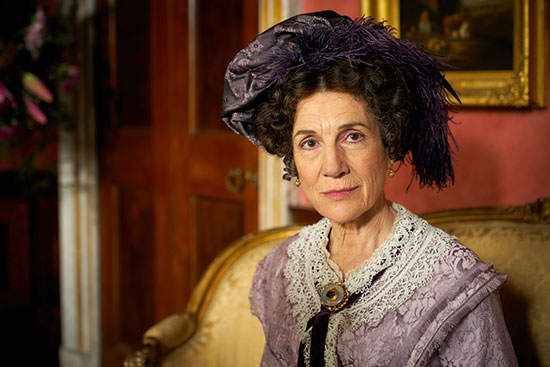
Fellowes called this a period “of great social mobility.” He’s interested in “the years after Waterloo, into the beginning years of Queen Victoria’s reign” precisely because they were a time when everything was changing.
The sparkling drama of old vs. new society in “Belgravia” depends on the stories of multiple interconnected characters. In what follows, we did what we could to tease the plot and characters without giving away too many details about the secrets unraveling behind the porticoed doors of London’s grandest neighborhood.
If you haven’t read the book, do your best not to be distracted by the lush costumes and the great houses until you know who’s who. To help, at the end of the page is a cheat-sheet to the main characters.
Once again Fellowes proves he’s the king of period dramas about struggles between the classes, and bets are that you’ll be captivated by all six episodes of “Belgravia.”
“Belgravia” (Season 1) is AVAILABLE to STREAM
Belgravia (2020)
The first thing I notice about “Belgravia” is how the soundtrack makes it feel like we are at Downton Abbey. Instead, we are in Brussels in the year 1815, on the eve of the battle of Waterloo. Napoleon is on the march, but lovely Sophia Trenchard is far more interested in seeing a certain young man at the ball of the Duchess of Richmond, than she is in the in the military maneuvers.
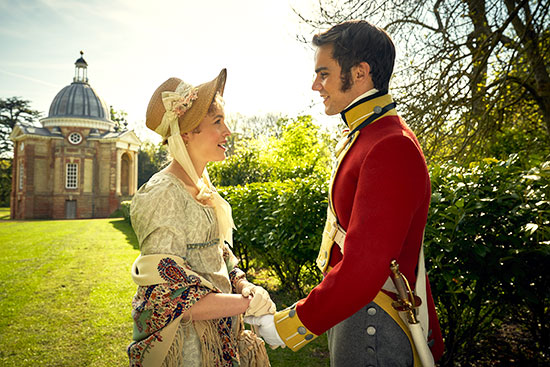
The man she’s longing to see is Edmund Bellasis, heir to one of Britain’s most prestigious families, the eldest son of an earl, and the nephew to the Duchess hosting the ball.
Sophia’s wise and worldly mother warns her daughter that “nothing proper can come of it” but agrees to attend the ball with her husband and Sophia. She adds that while the pair have enjoyed a harmless flirtation, it must end, immediately. When it comes to marriage, Edmund is not his own master, and will be unable to follow his heart in choosing a wife.
Sophia and her parents —her father James a vitler, a merchant who supplies the military with bread and ale, and her mother Anne, the daughter of a school teacher— may have risen financially, but they are beneath Edmund’s status. Marriage would be out of the question: the Trenchards are the nouveau riche.
At the Duchess of Richmond’s ball, Royal Highnesses, Lords, and Dukes move gaily in the glow of candlelit chandeliers, until a messenger breaks in at supper with important news. The men in uniform need to leave: Bonaparte is approaching Brussels. (The now legendary June 15, 1815 ball was held the night before the Battle of Quatre Bras, just two days before the Battle of Waterloo.) Sophia and Edmund cling to each other, making promises.
Twenty-six years later, we are in the upscale neighborhood of Belgravia, London. Anne Trenchard has moved higher in society, thanks to her husband’s post-war business involvements, and in polite company she and the Duchess meet again.
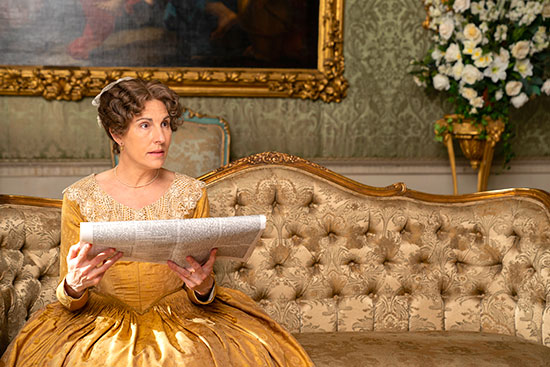
Here, Lady Brockenhurst, sister to the Duchess – and more importantly mother to Edmund – also meets Mrs. Trenchard, and the women discover they share a common bond. Actually two, but that’s a secret.
Ultimately, “Belgravia” becomes much more about these women than the young lovers, or the men in the period drama. Tamsin Greig, who plays Anne Trenchard said ‘It’s the women who manipulate things to their ends, so the men are the reactors to it.”
It becomes apparent just how far the Trenchards have risen, and we see their current family dynamic, which includes their petulant son Oliver, and his social ladder climbing wife Susan, who will be pivotal characters as the episodes unfold.
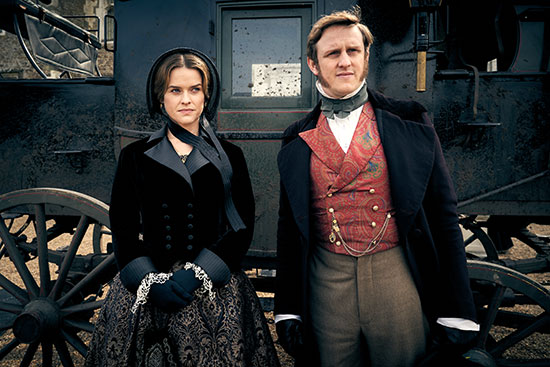
One sizable difference between “Downton” and “Belgravia” is that matriarch Anne Trenchard is far less reserved than CoraBeth, and delightfully more engaging. She loves Mr Trenchard, though she has things to forgive him for. They share what appears to be an easy, forthright and open rapport, but she also keeps secrets from him. Turns out, he keeps some pretty big secrets from her, too.
When we are treated to life below-stairs at the Trenchard house, the specter of “Downton” returns. Each time a staff member appears, I wonder if they are the equivalent of Anna, Carson, or Mrs. Patmore. Like their counterparts, they know plenty about what is happening above stairs, and some are willing to profit from it.
Lady Brockenhurst is married to the levelheaded Peregrine, Earl of Brockenhurst. When his useless gambling younger brother the Reverend Stephen Bellasis, and scheming nephew John Bellasis, appear early on in the series, we learn that the plot involves a question of rightful heir to the Brockenhurst fortune. While the Reverend is first in line to inherit should anything happen to the Earl of Brockenhurst, John is also the eventual heir. John’s reliance on this knowledge makes him all the more worthless, and things would get rather unsavory should another heir come to light.
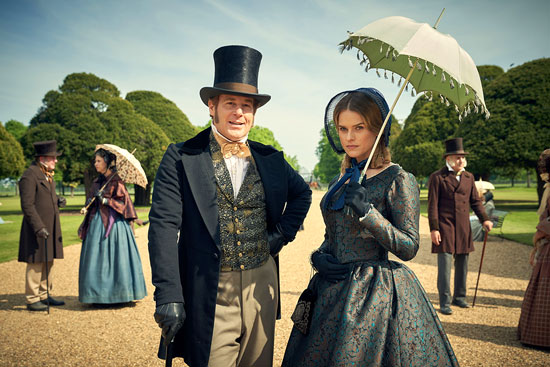
In a practical arrangement favoring birth over fortune, John is meant to marry the beautiful “impoverished” Lady Maria Grey, friend of Lady Brockenhurst. But Lady Maria and John have nothing in common except that others want the marriage. Lady Maria is independent and smart, and he’s self-important and shallow. She’d be much better suited to someone who is a match for her intelligence and desire to see the world, and surely that person must exist.
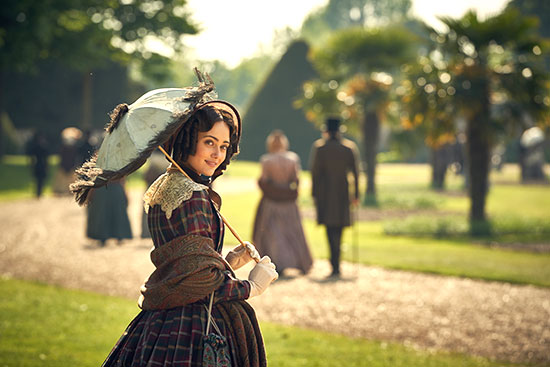
Charles Pope, Cotton Merchant, strides into his offices, and discovers the Lady Brockenhurst waiting for him. She sees what is there for anyone to see: Charles Pope is not only young, handsome, and enterprising, but is openly kind.
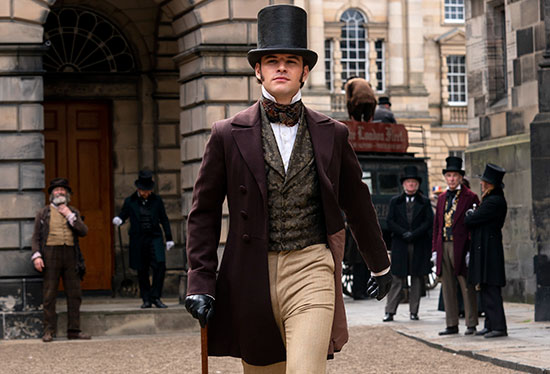
Their introduction brings the period drama to a new start. There’s a web of intrigue, betrayal and romance between many of the characters connected to Lady Brockenhurst and Charles Pope. And things are just getting started. The deceit, the scandal!
When we finally reach the last episode, the truth will out, and it’s very satisfying.
Belgravia (Season 1) is AVAILABLE to STREAM
The Characters of Belgravia
Tamsin Greig (Emma) is matriarch Anne Trenchard. Though her family is upwardly mobile and eventually part of the nouveau riche, she’s the daughter of a school teacher and down-to-earth. Her relationship with Lady Brockenhurst is the heart of the story.
Philip Glenister (Cranford) is her husband James Trenchard, chief supplier of provisions to the Duke of Wellington’s troops. The prosperity the Napoleonic Wars enables James Trenchard to take a massive hand in building Belgravia, the new ‘City of the Rich’ in London.
Emily Reid (The Trouble with Maggie Cole) is their daughter Sophia, vibrant, romantic and idealistic, desperately in love with a man above her class.
Richard Goulding (The Windsors) is Oliver, the Trenchard’s son who feels that his father is never satisfied by him, and rightly so, because he’s unwilling to work as his father did. He’s lazy and entitled.
Alice Eve (Ordeal by Innocence) is the daughter-in-law Susan Trenchard, married to Oliver. She’s self-serving and unhappy, but isn’t a bad person. She’s been taught that society is her her career, so has taken that very seriously.
Dame Harriet Walter (Sense and Sensibility) is the Countess Lady Brockenhurst. Aristocratic, superior, and deeply wounded, she’s a complicated human who has always lived by the rules of her class. It would take something big to shake her from tradition.
Tom Wilkinson (Sense and Sensibility) is Peregrine, Lord Brockenhurst, husband to Lady Brockenhurst. He’s a solid husband, but has been disappointed by his family and struggles with his past.
Jeremy Neumark Jones (The Last Post) is Edmund, or Lord Bellasis. He’s son and heir to the Earl of Brockenhurst, head of one of the most influential families in England. He’s handsome and has fallen for Sophia Tenchard, a young woman beneath his class.
Adam James (Band of Brothers) is John Bellasis. He’s a player, greedy, and is already counting the money he will inherit when his uncle Peregrine, Lord Brockenhurst dies. But John’s father, the no-good Reverend, will have to die first.
Newcomer Jack Bardoe is Charles Pope, the enterprising, upright, young man who finds suddenly himself at the center of the drama between the Trenchards and the Brockenhurts.
Ella Purnell (Ordeal by Innocence) is Lady Maria Grey. her mother Lady Templemore is certain that she should marry John Bellasis, and thereby save the family name, but her heart leads her elsewhere.
Tara Fitzgerald (Jane Eyre) is Lady Templemore, Lady Maria Grey’s mother. She considers her daughter to be wayward and feels she must keep her from ruin.
If you enjoyed this post, wander over to The Period Films List. You’ll especially like the Best Period Dramas: Georgian and Regency Era List.


QNPoohBear
April 13, 2020 at 8:53 pm (5 years ago)There’s not much of a mystery. I figured out the whole plot from the prologue! The book was insanely predictable, yet I couldn’t put it down! I look forward to seeing the adaptation if only for the amazing actors, costumes and historic buildings.
Judy Smith
April 12, 2020 at 10:07 pm (5 years ago)I have listened to the audio version three times. I love Juliette Stephenson’s reading of the book, and I love the story. I bought it when it was first available , so I am really anxious to see this version.